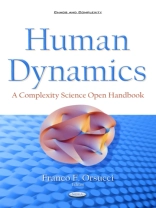The classical Roman poet, Titus Lucretius Carus (c. 99 BC – c. 55 BC), described the clinamen, or swerve, as an occurrence that we now call singularity, also popularized as the butterfly effect. His poem, De Rerum Natura (On the Nature of Things), reminds us that an awareness of the intrinsic complexity of natural dynamics has been present for a very long times in human culture (Lucretius, 54BC in 1971; Greenblatt, 2011). It is quite recently, however, that complexity has become a suitable scientific approach. The meta-paradigm of Complexity Science crosses over different disciplines, from physics and mathematics to biology, social sciences, and now psychotherapy. Complexity Science is the scientific toolbox for complex dynamical systems. This definition comprehends a series of sub-disciplines: dissipative systems, cellular automata, fractals, catastrophes, self-organization, self-organized criticality, chaos theory, fuzzy logic, stochastic resonance, cellular automata, neural networks, genetic algorithms, and others.
Franco F Orsucci
Human Dynamics [PDF ebook]
A Complexity Science Open Handbook
Human Dynamics [PDF ebook]
A Complexity Science Open Handbook
Köp den här e-boken och få 1 till GRATIS!
Formatera PDF ● Sidor 350 ● ISBN 9781634840552 ● Redaktör Franco F Orsucci ● Utgivare Nova Science Publishers ● Publicerad 2015 ● Nedladdningsbara 3 gånger ● Valuta EUR ● ID 7226309 ● Kopieringsskydd Adobe DRM
Kräver en DRM-kapabel e-läsare












